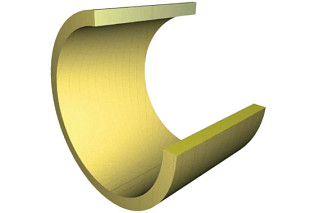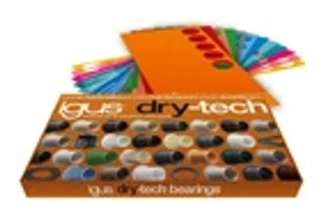Change Language :

How to Eliminate Binding and Stick-slip in Linear Plastic Bearings

In this tech talk we’ll take a quick look at how plastic linear bearings work, where this stick-slip motion comes from, and easy ways to avoid it.
Through the years I’ve met many customers who use recirculating ball bearings in every linear application on their equipment, when in many cases a dry-running plain plastic bearing could offer them both a cost reduction and technical improvements to their equipment. When I ask why, the answer I usually get is that they’ve used a sliding bearing in the past, only to encounter a problem with stick-slip, or ‘sticktion.’ In other words, the bearing system moves with a sort of chattering motion, rather than the nice smooth motion all linear applications are striving for. The good news for all sticktion sufferers is that this problem is easy to avoid.
Plastic linear bearings: An overview
Unlike the technology behind a traditional recirculating ball bearing, which operate with a rolling element and a lubrication system (like oil or grease), plastic bearings are specially designed to slide without any need for external lubrication. This lack of lubricant is one of the key advantages of choosing an engineered plastic bearing for your application. Without the grease and oil, plastic bearings can be used in environments where lubricant contamination is a serious no-no, like in lab equipment and food processing lines, as well as rough and dirty environments where particles would collect in the grease, then seize up the rolling elements of ball bearings. These plastic bearings also help save on maintenance and downtime that’s associated with ball bearings.
Studies have shown that about $240 BILLION is lost each year across US industries because of downtime and repairs associated with lubrication issues.
On the other hand, plastic bearings work by using a systemof solid lubricants embedded directly into the plastic material.These tiny particles of lubricant are transferred from the bearingonto the shaft as friction occurs lowering the system’s friction,meaning that lubrication and seizing can become a thing ofthe past. The real advantage here is that this dry lubricationis homogeneously blended throughout the bearing, so thatno maintenance is ever required, and there is no possibility ofgrease seeping out of the system to leave an un-lubricatedsystem.
In addition to the base plastic material and solid lubricants, plastic linear bearings are filled with a matrix offiber reinforcements that offer superior strength and wear-resistance compared to simple polymers.
Now, even though these solid lubricants inside plastic linear bearings can save time, money, and the threatof contamination, these bearings will still have a coefficient of friction that is higher that a lubricated ballbearing. Because of this, there are a few design considerations to consider to avoid the dreaded stick-slip.

1: Follow the 2:1 rule! If either the drive force (Fa) or appliedload force (Fs) are a greater distance than twice the bearinglength (w,x), then troublesome binding or chattering can occur.This distance is measure from these forces to the rail closestto the drive force. I’d recommend you always spread thesebearings as far apart as your design allows.
The bearing sets will chatter as they slide in one, or bothdirections when carrying a cantilevered load, or the bearingsmay not move at all if they’re being moved by a highly offsetdrive force.
2. Define a Fixed and Floating side. If you’re using a dual-rail, 4 bearing system, it’s important to define one rail as the fixed side. This should be the rail closest to the drive force. The other rail needs to be the floating side, meaning it uses bearings with a little extra clearance. Having one side fixed and the other floating reduces the drive power required to move the system, keeps wear to a minimum, maximizing the bearings’ service life, and increases the possible maximum velocity. Using a fixed/floating system also maintains better precision and compensates for angular rail misalignments. If you don’t use a fixed/floating system, you must calculate your 2:1 from the further rail, which limits your design possibilities.
I hope this article might help you consider drylin® linear bearings for your future applications. If you have any questions or comments about the above information above, feel free to contact me here igus®, or check out our selection of drylin® online tools.
Thanks!
Matt Mowry
drylin® Product Manager

Configure motorized linear axes
Compare, design and configure suitable linear tables and motors online quickly and easily.
drylin® E Product Finder
Lifetime calculator
Find the right linear bearing in 4 simple steps. Choosing linear bearings has never been so easy.
Lifetime calculatorUseful Links and Tools
Request free samples linear systems and bearings!

dry-tech® bearings box
iglide® - the benefits at a glance. Our new dry-tech sample box allows you to quickly find the matching bearing for your application.